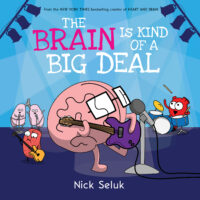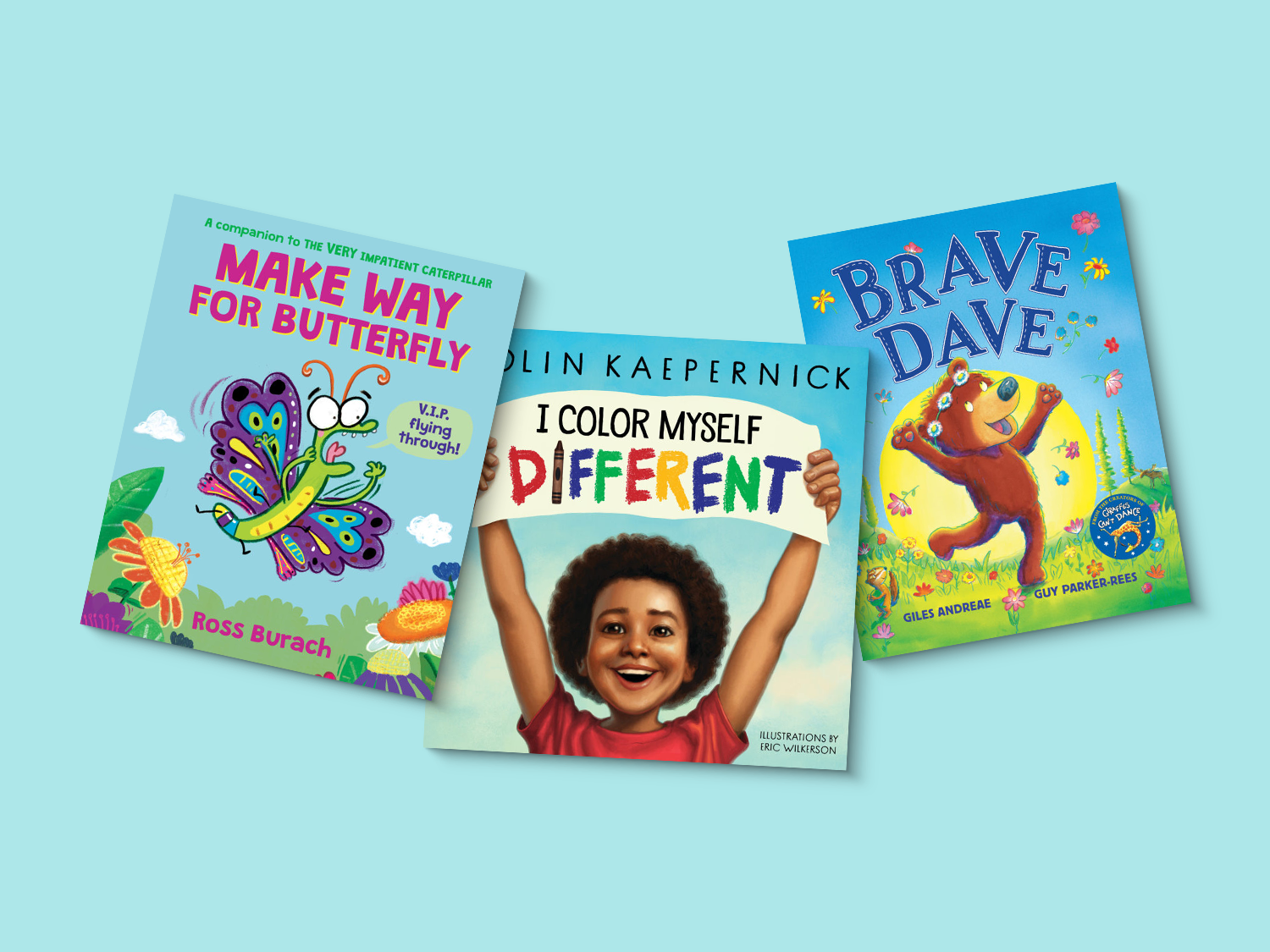Brain Breaks to Keep Your Students Engaged in Learning
Help students feel refreshed and focused with these easy activities.
Brain Breaks to Keep Your Students Engaged in Learning
Taking quick brain breaks throughout the school day is one of the best ways to keep your students focused on learning.
“Breaks, especially those that are multisensory and involve kinesthetic movement, are helpful with focusing, visualization, alleviating stress, and more,” says Leana Malinowsky, a second-grade teacher in New Jersey. “Depending on the activity, it also offers time for students to connect socially and practice teamwork skills.”
Why Take a Brain Break?
Everyone needs a brain break sometimes, especially kids who have been working hard all day. Depending on your classroom space, your breaks may be small motor-type exercises with simple hand movements or large motor exercises that involve lots of moving. These brief intermissions will help wake up your students and refocus their attention on the next task, especially at the end of the day when their minds are particularly prone to wandering.
When Should You Take a Brain Break?
You can initiate a brain break before, during, or after a lesson, and while transitioning to a new activity or a new classroom space. If you have noticed that there are particular times during the day when your students seem to lose focus, that’s when a brain break will help the most.
Try using brain breaks after giving direct instructions to your class. For example, if you have just taught a math lesson, you might ask your students to count how many steps it takes them to move from the carpet back to their seats. The majority of students will be so focused on counting their steps that they have little time for chitchat or other distractions.
The next time you and your students need a quick refresh, try these brain breaks to bring even more joy to learning.
1. Get Your Students Moving
Brain breaks not only keep your students engaged, but they also help them retain information, says Terry Stoufer, a third-grade teacher in Florida.
Stoufer’s brain breaks often incorporate music, dance, and storytelling, but she also likes to use exercises that cross the midline — engaging both the right and left hemispheres of the brain. “One example is touching the right elbow with the left knee in a stretch and vice-versa,” she says.
To get the most out of these brain breaks, try following them with class read-alouds about the brain like The Brain Is Kind of a Big Deal andYour Fantastic Elastic Brain. Students can learn how the brain works, why brains need to rest, and how they can stretch their own brains to develop a growth mindset.
This funny and factual picture book from Heart and Brain creator Nick Seluk explains the science behind everything the brain helps you do: keeping your heart beating, telling you when you are sleepy, remembering stuff, and much more.
Did you know you can stretch and grow your own brain? Or that making mistakes is one of the best ways your brain learns? Just like how lifting weights helps your muscles get stronger, trying new things without giving up like finding the courage to put your face in the water the first time you're at a pool strengthens your brain. Next time, your brain will remind you that you overcame that fear, and you will be braver!
2. Make Time for Mindfulness
When it comes to giving her students’ brains a break, Malinowsky often turns to mindfulness exercises.
“I like using these before tests or work assignments, or after we’ve worked on an assignment for a while that was challenging,” says Malinowsky. “Mindfulness increases students’ self-awareness, confidence, and eases tension and anxiety.”
She suggests pairing simple yoga moves and breathing exercises with books focused on social-emotional learning.
Stories like ABC Mindful Me, Mindful Me, Happy Me: The Caring Me I Want to Be, and Mindful Me, Happy Me: Stay Cool at School, as well as nonfiction books touching on health and wellness, are great reads to reinforce the importance of mindfulness, movement, and easing anxiety and worry.
It is vital that students learn social emotional skills like confidence, compassion, resilience, and responsibility. This collection from Scholastic features titles that teach mindful kindness to children.
This bright picture-book introduction to the benefits of mental and physical well-being connects ancient traditions like mandalas to happiness.
This rhyming guide to social skills is a good introduction for young children to the power of kindness. Includes helpful times and activities.
Kids walk and skate and tumble through these pages with such exuberance that even sprouting couch potatoes will want to get up and bounce around, and that's the ultimate goal. Through education, information, and encouragement, this book aims to inspire a new generation of busy bodies.
An introduction to taking care of ourselves so we're as healthy as we can be.
3. Make Connections Through Reflection and Expression
Malinowsky likes to carve out time throughout the day for her students to reflect and focus on self-expression and creativity through writing, drawing, and journaling.
Pairing stories like The Dot, Ish, and Sky Color before and after these brain breaks are great opportunities to tie in even more social-emotional learning.
“During my interactive read-alouds, I’ll often refer to videos and songs that I can make a connection with from our brain breaks,” says Malinowsky. “This is an opportunity to demonstrate to students cross-curricular connections and the importance of taking breaks.”
With a simple, witty story and free-spirited illustrations, Peter H. Reynolds entices even the stubbornly uncreative among us to make a mark, and to follow where it takes us.
A creative spirit learns that thinking "ish-ly" is far more wonderful than "getting it right" in this gentle new fable from the creator of the award-winning picture book The Dot.
The sky's no limit as the author-illustrator winds up his Creatrilogy with a whimsical tale about seeing the world a new way.
Want even more inspiration? Try these quick brain break ideas:
Movement Songs: Sing a song with whole-body movements such as "Head, Shoulders, Knees, and Toes", or let your students dance and sing along to their favorite recorded song.
Jump Skip Counting: Have your students count by twos, fives, or tens while jumping with each count.
Exercise Movement Counting: Same as jump counting, but use a different type of exercise such as arm circles or knee bends.
Play Pretend: For a few minutes, have your students pretend to be animals, transportation vehicles, or book characters.
Freeze Dance: In this twist on a regular dance party, play music and have students freeze whenever the music stops.
Line Up Challenge: Have students line up using specific criteria such as last name (alphabetically), height, or age (months of the year).
Simon Says: Students do what “Simon” says.
Follow the Leader: Students follow the movements of whoever is the leader.
Pattern Clap: Clap your hands in different slow and quick patterns and have students copy your movements and rhythm.
Every gorgeously illustrated Science Comics graphic novel offers a complete introduction to a particular topic.
This mindfulness book showcases the relaxing and calming technique of belly breathing, a tool everyone can use to improve concentration and relieve tension.
It is a busy day at Peppa and George's playgroup, but they have a very special visitor coming in the afternoon. Miss Rabbit is going to teach the children how to calm down and relax with yoga.
Bouncing along to Bob Marley's classic reggae song, a little boy sheds his worries with help from a bird trio.
With bold paintings and a simple, rhyming text, Caldecott Medalists Leo & Diane Dillon bring young readers a rap a tap tap celebration of dance that will have readers clapping and tapping along.
With light-footed rhymes and high-stepping illustrations, this tale is gentle inspiration for every child with dreams of greatness.
We all come in different shapes and sizes, and it doesn't matter if you are tall, short, skinny, or round. Your body is your own, and you need to take care of it. Whether it's a New Year's resolution or simply time for a change, this book is the perfect catalyst to get readers moving. Vibrant, fun-filled illustrations and an encouraging text explain the many great reasons to exercise, from making new friends to going new places, or just because it's good for your body.




















